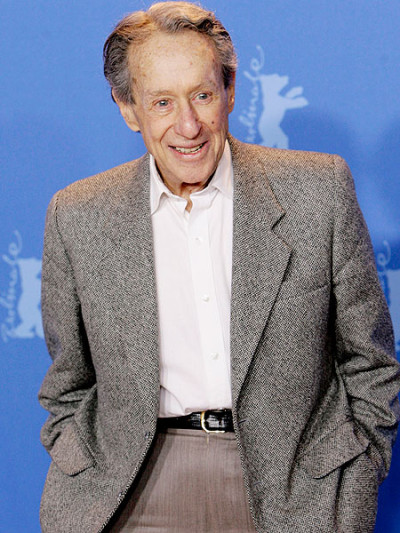Arthur Penn (Arthur Hiller Penn)

Arthur Penn was born to a Russian Jewish family in Philadelphia, Pennsylvania, the son of Sonia (Greenberg), a nurse, and Harry Penn, a watchmaker. He was the younger brother of Irving Penn, the successful fashion photographer. During the 1920s, he moved in with his mother after she divorced Penn’s father. Some time after, he came back to his sickly father, leading him to run his father’s watch repair shop. At 19 he was drafted into the army. Stationed in Britain, he became interested in theater. He started to direct and take part in shows being put on for the soldiers around England at the time. As Penn grew up, he became increasingly interested in film, especially after seeing the Orson Welles film Citizen Kane. He later attended Black Mountain College in North Carolina, and was a featured commentator in the documentary Fully Awake about the college. After making a name for himself as a director of quality television dramas, Penn made his feature debut with a western, The Left Handed Gun (1958) for Warner Brothers. A retelling of the Billy the Kid legend, it was distinguished by Paul Newman’s sharp portrayal of the outlaw as a psychologically troubled youth (the role was originally intended for the archetypal portrayer of troubled teens, James Dean). The production was completed in only 23 days, but Warner Brothers reedited the film against his wishes with a new ending he disapproved of. The film subsequently failed upon release in North America, but was well received in Europe. Penn’s second film was The Miracle Worker (1962), the story of Anne Sullivan’s struggle to teach the blind and deaf Helen Keller how to communicate. It garnered two Academy Awards for its leads Anne Bancroft and Patty Duke. Penn had won a Tony Award for directing the stage production, written by William Gibson, also starring Bancroft and Duke, and he had directed Bancroft’s Broadway debut in playwright Gibson’s first Broadway production, Two for the Seesaw.
In 1965 Penn directed Mickey One. Heavily influenced by the French New Wave, it was the dreamlike story of a standup comedian (played by Warren Beatty) on the run from sinister, ambiguous forces. In 2010, Penn commented: “You know, you could not have gone through the Second World War with all that nonsense with Russia being an ally and then being the big black monster. It was an absurd time. The McCarthy period was ridiculous and humiliating, deeply humiliating. When I finally did ‘Mickey One’, it was in repudiation of the kind of fear that overtook free people to the point where they were telling on each other and afraid to speak out. It just astonished me, really astonished me. I mean, I was a vet, so it was nothing like what we thought we were fighting for.” Penn’s next film was The Chase (1966) a thriller following events in a small corrupt Southern town on the day an escaped convict, played by Robert Redford, returns. Although not a major success, The Chase nonetheless caught the mood of the turbulent times, a ‘state of the nation’ tale of racism, corruption and the violence endemic in American society.
Reuniting with Warren Beatty for the rural gangster film Bonnie and Clyde (1967), Penn once again showed that he had his finger on the pulse of the zeitgeist, perfectly catching the youthful disenchantment of the late ’60s. Although set 30 years earlier, during the Depression, it was very much in the spirit of the contemporaneous “counter-culture”. Bonnie and Clyde went on to become a worldwide phenomenon, at the same time pushing the limits of acceptable screen violence with its bloody machine-gun climax (two years before Sam Peckinpah’s The Wild Bunch). The film was strongly influenced by the French New Wave and itself went on to make a huge impression on a younger generation of filmmakers. Indeed, there was a strong resurgence in the “love on the run” subgenre in the wake of Bonnie and Clyde, peaking with Badlands (1973; in which Penn received acknowledgement in the credits). Next came Alice’s Restaurant (1969), based on a satirical ballad by Arlo Guthrie. His next film after this was a return to the western genre, Little Big Man (1970), a “shaggy dog” account of the life of a white man (played by Dustin Hoffman) who gets adopted into the Cheyenne tribe. In 1973 Penn provided a segment for a promotional film for the Olympics, Visions of Eight along with several other major directors such as John Schlesinger and Miloš Forman. His next film was a paranoid thriller set in Los Angeles, Night Moves (1975) about a private detective (played by Gene Hackman) on the trail of a runaway. Next came a comic western, The Missouri Breaks (1976), a ramshackle, eccentric story of a horse thief (Jack Nicholson) facing off with an eccentric bounty hunter (played by Marlon Brando).
In the 1980s, Penn’s career began to lose its momentum with critics and audiences: Four Friends (1981) was a traumatic look back at the Sixties, returning to the old themes of Vietnam, civil rights, sexual politics, and drugs. Next came Target (1985), a mainstream thriller reuniting the director with Gene Hackman, and Dead of Winter (1987) was a horror/thriller in the style of Alfred Hitchcock, which he took over directing during production. Subsequently, Penn returned to work in television, including an executive producer role for the crime series Law & Order. Throughout the years, Penn had maintained an affiliation with Yale University, occasionally teaching classes there. Penn died in Manhattan, on September 28, 2010, a day after his 88th birthday from congestive heart failure. He is survived by his two children, Molly and Matthew.
Born
- September, 27, 1922
- USA
- Philadelphia, Pennsylvania
Died
- September, 28, 2010
- USA
- New York, New York
Cause of Death
- heart failure



